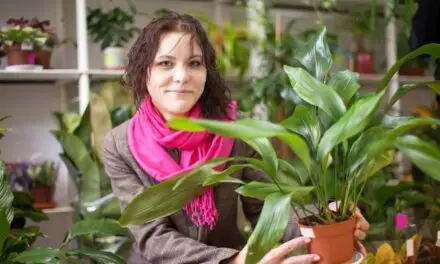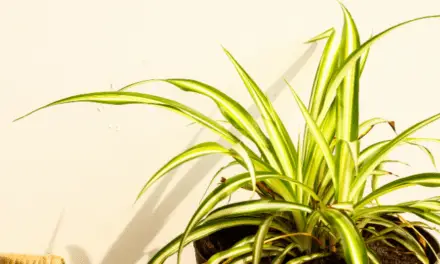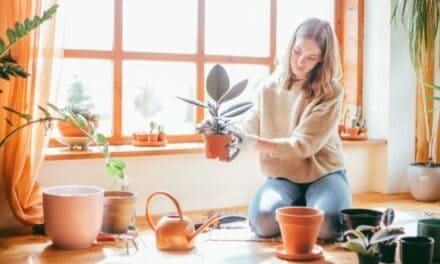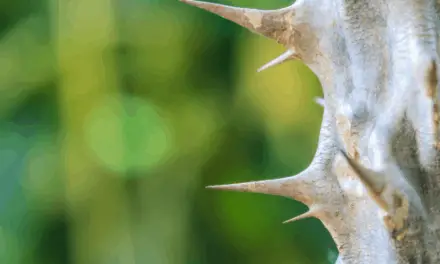You have this beautiful and vibrant bromeliad.
You do all the right things, give it a good misting every few days and you watch so it doesn’t develop root rot or become stagnant.
You even have it in the perfect spot with fans to move air around.
The leaves were doing great, but now they are curling inwards and upwards.
It’s a situation that many bromeliad owners face.
So, what exactly is going on here?
Table of Contents
Why Are My Bromeliads Leaves Curling?
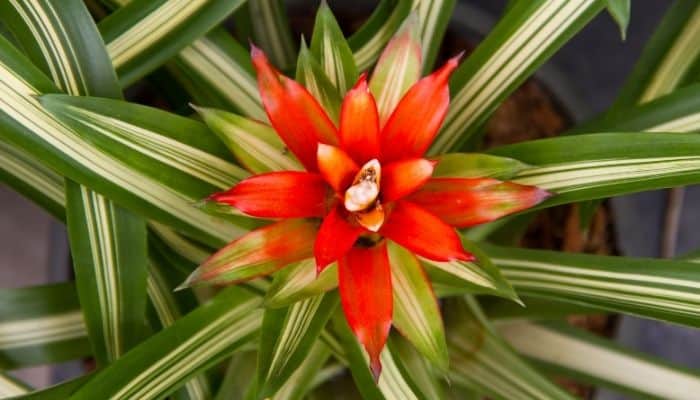
Your bromeliad’s leaves are curling because It needs more water. When the leaves of your bromeliad start curling up at the edges it is a clear sign that your plant is thirsty and needs misting or watering.
There are some things you can do to take care of this but it could also mean that the plant is at the end of its life span.
Bromeliads often don’t require a traditional pot or soil, they’re epiphytes which means they latch onto other plants or objects as a support to grow.
This is what makes them challenging to care for because determining a watering schedule can be difficult.
If it’s only the leaf tips browning, don’t worry too much.
They might be adjusting to a drier environment compared to that of their tropical native habitat.
But it’s important to take note of any curling of the leaves as this indicates the plant needs water.
Related Article: Why Are My Bromeliad Leaves Splitting?
How Do I Know If My Bromeliad Is Thirsty?
Any sign of dryness or curling up of the leaves, including a browning around the edges, means they need some water.
Bromeliads absorb water through their leaves and get most of their nourishment that way, so dehydration is a frequent problem.
When the leaves curl, it’s their natural method of obtaining as much moisture from the surrounding environment as possible.
It’s a coping and compensation mechanism for the plant to try and take in more moisture.
Related Article: Why Is My Bromeliad Losing Its Color? (And What To Do)
How To Stop Your Bromeliad’s Leaves From Curling
The first step in caring for your bromeliad is finding out the type of one you have.
What Type Of Bromeliad Do You Have?
The species you own will determine how much humidity it requires.
If we take a look at two different types of bromeliad, Neorogelias and Dyckias:
Neorogelias like lots of humidity and may need to be misted 3 or more times per week, while Dyckias don’t like much humidity at all and may not even require misting.
Once you find out which species of bromeliad you have, you’ll know its exact requirements for watering and humidity.
Watering Your Bromeliad
Make sure you give the leaves a good dousing if required and that it has enough humidity in the air.
Get a humidifier or a pebble tray to increase hydration.
Ensure the center cup is always filled a quarter to halfway with water, especially in summer.
Empty any standing water every few weeks and then replenish with fresh water.
This will ensure it stays moist and halts any mineral or salt buildup.
Treating Severe Thirst
If the dryness, browning, and curling look severe, try to soak watering your bromeliad to give it enough moisture.
Without the pot’s saucer, put the plant in a draining basin, like a sink or tub.
Fill it with around three to four inches of water.
Avoid hot water and opt for the cooler side of lukewarm water to avoid any damage to the roots.
Let the plant sit in this bath for 45 minutes to an hour.
Do a soil check and test how dry the surface is.
If it’s still dry, moisten the top of the soil to help promote quicker absorption.
Once you feel that dampness is even, drain the basin and let the plant sit.
This will ensure affluence is thorough and fast.
Finally, put the bromeliad back onto its saucer and return it to its original spot.
Should You Mist Bromeliads?
Depending on the type of bromeliad you have, you may need to mist it regularly if your home is quite dry (less than 60 percent humidity).
Be sure to only mist your plant when its leaves are dry and before it is exposed to any direct sunlight.
You can mist your bromeliad by hand using room temperature, lime-free water with a water bottle that can emit a fine mist.
You could also use an electronic humidifier.
How Do I Know If My Bromeliad Is Dying?
Unfortunately, It’s part of the bromeliad’s lifecycle for the mother plant to die out and its babies (pups) to live on.
In the case of bromeliads, if the plant is looking unwell and the leaves are turning brown and/or drooping, it’s usually because the mother plant is dying.
If the center part of the plant is dying with lush, green pups growing out, the main plant is on its last legs.
You can cut off any dead leaves, but do this only one-by-one.
Then, cut back the dying plant to the base.
This will give younger leaves more growing space along with extra sunlight.
At this point, you can either leave the pups attached or you can remove and repot them.
It’s best to do this when they’re about 1/3 the size of their mother so their roots are more developed.
This will help them thrive and survive after removal.
Can I Bring My Bromeliad Back To Life?
Unfortunately, if your plant has reached the end of its life cycle, you will not be able to revive it.
If you want to prolong your bromeliad’s life, all you can do is remove the plant’s dying bloom with a scissors.
Cut the bloom where it joins the center of the plant’s cup.
Removing the bloom will help your bromeliad to last a little longer by redirecting energy from its dying flower and using it for other vital processes.
Final Thoughts
If you keep a watchful eye on your bromeliad, you’ll be able to catch problems before they become serious.
You’ll understand when they get enough water or have had too little, indicated by curling leaves.
Unlike most other plants, they dehydrate fast.
You have to pay close attention to know when the plant is thirsty and take care of this as soon as you spot it.
Curling leaves on your bromeliad are the indicator that your plant needs watering or more humidity.

